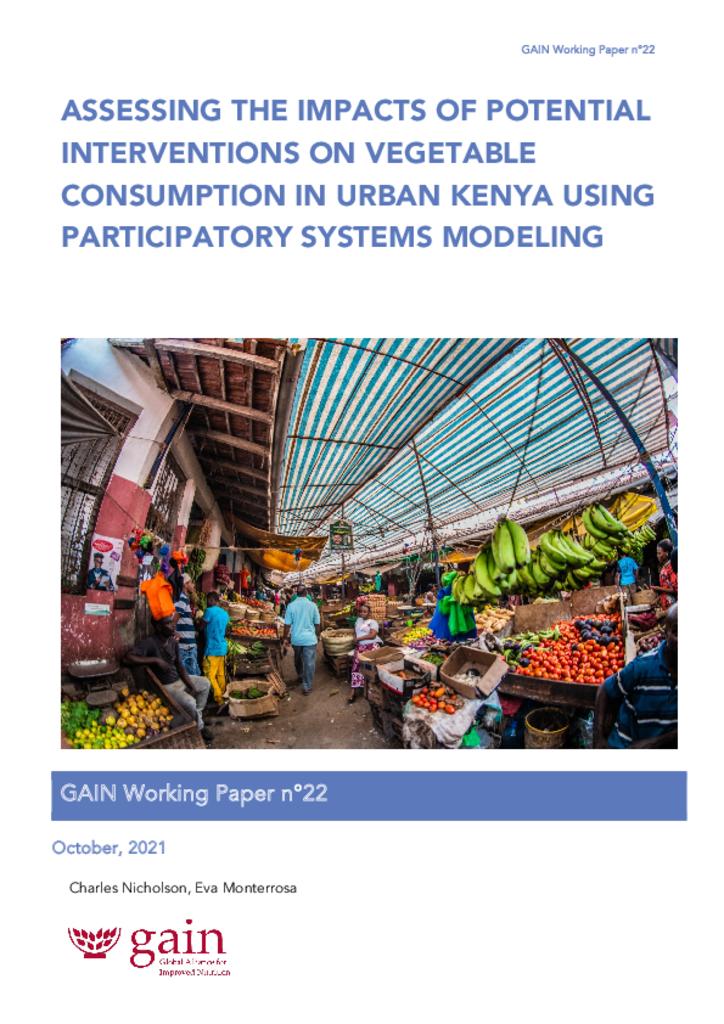Efforts to increase the consumption of vegetables focus on addressing availability, accessibility, and desirability, usually through a value chain approach. We sought to build on this value chain approach by using participatory systems modelling to address the relatively stable daily per capita vegetable consumption in Nairobi, Kenya over the last 15 years.
The participatory systems modelling combined system dynamics modelling with a participatory process via two workshops. In the first workshop, stakeholders’ views were solicited to construct a conceptual model of linkages (a causal loop diagram). In the second workshop, stakeholders assessed potential responses of value chain actors to various interventions. The information from the workshops was used to build and refine a simulation model, complemented by data from the literature.
This simulation model was then used to assess six different classes of interventions: consumer awareness, vegetable quality, convenience, farm costs, farm perishability, and farm yields. The outcome, vegetable consumption, was highest (at 171 (122, 206) g/day [median (minimum, maximum)]) with increasing farm yields; however, combining the six interventions delivered the largest change, 198 (170, 209) g/day, suggesting synergies with multiple value chain interventions. Additional analysis of implementation costs would complement assessment of simulated consumption changes.
The participatory systems modelling process has the potential to strengthen programme planning efforts by identifying different classes of interventions across the value chain that can improve vegetable consumption. Drawing on the model’s findings, GAIN identified which of its programmes in Kenya could be deployed for this objective. Further knowledge development is needed to refine the model.
